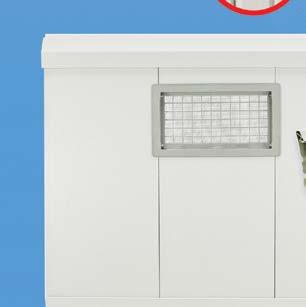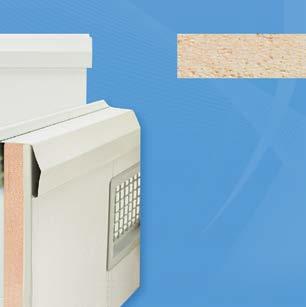
12 minute read
Simple Community Home Sales Tips
It’s the little things that are vital. Little things make big things happen!
–John Wooden
SIMPLE Community Home Sales Tips
by Ken Corbin
LLet’s be honest. The primary focus of a community
manager is just that: managing the community. With
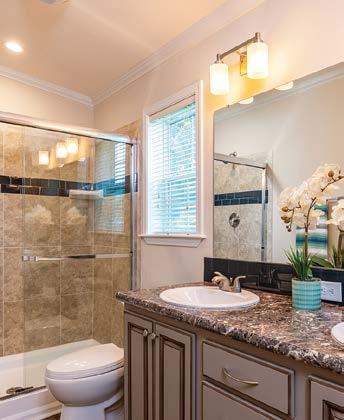
Back Doors, Smoke Detectors, and Commodes 1. Remove the handle on the back door of your models and replace it with a double-keyed deadbolt lock. This way, there’s no handle on either the inside or the outside and you NEVER have to remember to lock the back doors at the end of the day. It’s also a great way to avoid having anyone open the back door and perhaps fall and hurt themselves. Finally, put a nicely framed graphic on the inside of the back door with a note that simply says “NO EXIT” 2. Smoke detectors that are constantly beeping while you’re showing your homes to customers are a major distraction. Even if you take out the batteries, they’re hard-wired into the system. They can easily be discharged after the batteries are removed. This stops the irritating beeps. Talk to your manufacturer and they’ll tell you how to do this for your brand of detector. Of course, it’s important that you recharge them and replace the batteries when the model is sold. 3. Use quality tape when securing the lids on all of your commodes. A simple note, on top, that says “Please
Photos courtesy of Tharakan Consulting

Use Office Restrooms” will generally work. Of course, also make sure the note is securely taped down to the lid. Many communities simply put a nicely tied bow around the bowl of the commode. It’s a simple way to say, “Sorry, I’m not available.” 4. If you handle more than one manufacturer, or your current plant changes door suppliers, you’ll likely be stuck with multiple master keys. This can be a real pain during wet or cold weather, trying to find the right key to open the doors. To help minimize your frustration, here are a couple of suggestions: a. If you only have two types of locks, place a small, round color-coded label at the door handle that corresponds with the labeled key. b. The other choice, especially if you have more than two different types of homes, is to have all the locks keyed to be identical. It’s a small expense with a local locksmith that will pay for itself many times over. »

Kitchens and Baths
One of the most frustrating things I see when touring models in a community or a sales center is how they’ve lacked finishing the two most important rooms in the home – kitchens and baths.
If someone is going to invest in quality appliances, they’ll want to open the doors and easily see the inside. It’s amazing how many companies fail to even remove the tape that secures the doors shut on appliances. Even if that part has been done, I see my share of packing materials left inside the appliances including refrigerators, ranges, microwaves, and dishwashers.
Remove all of the marketing, warranty items, and notices that are in the kitchen and bath drawers. They add absolutely no value and are nothing more than a distraction. Don’t forget all the rubber bands on cabinets and drawers.
Obviously, you’ll not remove any required governmental notices, but everything else need to go! Package it all in a box with the model number labeled and stored away until the home is sold.
Doors and Windows
Remove virtually all of the stickers off the doors and windows, leaving only one on each. If you’re reading this at home, look around.
Are all the stickers that originally came with your windows and doors still on there? Of course, not! If your car was purchased new, is the window sticker still there? No, and it probably was removed the day you bought the car. There’s no “value” in leaving the stickers and shipping materials in place. I do, however, recommend you leave one on both doors and one prominent window as a tool when you’re feature/benefiting the home.
It’s rare your competitor will ever spend any time discussing what those numbers are for, probably because they have no idea of exactly what they truly mean.
Well, let’s be honest. The first time you are reading or hearing this, you probably don’t know either... But now’s a great time to add more positives to your simple selling scale. MHV Industry consultant Ken Corbin has worked with over 800 communities, retailers, associations, and manufacturers. He’s also co-facilitator of the MH20 Group. For more information, e-mail: ken@callkencorbin.com.
Financial Services for the MH Industry
RETAIL FINANCING • Home Only • Land/Home • Land Plus • Communities
FLOOR PLAN FINANCING
INSURANCE • Open Lot • General Liability • Homeowners Coverage
Triad Financial Services is trusted by borrowers, dealers, manufacturers, and lending institutions alike. We’ve helped families realize their dream of home ownership for more than 50 years.
For more information, please call:
Headquarters: 800-522-2013 (NMLS #1063)
Midwest Regional Office: 888-936-1179 (NMLS #18304)
West Coast Regional Office: 866-321-3153 (NMLS #249870)
www.TriadFS.com
Other terms and conditions may apply. Not all products are
available in all states.This
advertisement is not intended for consumer use. This is not an advertisement to extend consumer credit as defined by TILA Regulation Z.
owners/operators of land-lease communities throughout North America. But prior to applying that apropos property label, terminology had to evolve from trailer camp to mobile home park to manufactured home community. Also during this time Gub Mix, association director in three western states, hosted the first Manufactured Housing Congress – continuing to this day, as an annual MHI event.
MHI’s Manufactured Housing Educational Institute (MHEI) launched
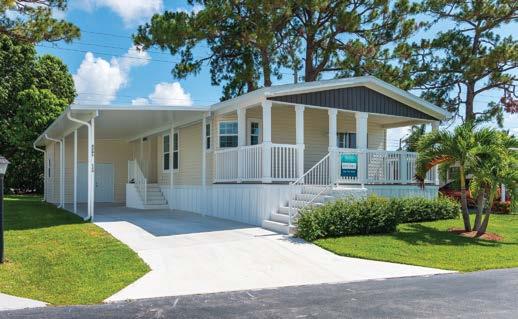
the Accredited Community Manager (ACM) training program in 1991. And in 1992, the first Industry Standard Chart of Operating Expenses, and related Operating Expense Ratios (OERs) made their appearance, just in time for the Real Estate Investment Trust (REIT) wave of 1994 and 1995. But not before now-retired Martin Newby, of Newby Management, formalized the concept and processes for resident relations within the realty asset class, which in turn, took steps in
1996 to form the National Communities Council (NCC), now a division of MHI. This same year, David Helfand, former CEO of REITs Equity LifeStyle Properties and ARC, suggested the term owners/operators be used to describe the breadth of ownership and management of 50,000+/- communities comprising this unique income-producing property type.
In 1998 we saw 372,943+/- new HUD-code homes shipped, a sort of mini-renaissance for the industry; one in which so-called Developer Series
Photo courtesy of Tharakan Consulting
Homes (think “big box = big bucks”) were all the rage for a short while. And during the same year, the ABC classification of MHCommunities methodology replaced the long defunct, since 1976, Woodall STAR system of property quality measurement and reporting.
During 2001, the Manufactured Housing Manager (MHM) professional property management and certification program was launched after a 13-year hiatus. The following year, as the shipments of new HUDcode homes started to tank, “Be a stud, sell a HUD!” became the widespread rallying call for the industry.
In year 2009, the industry’s nadir shipment year, Community Series Homes materialized during a meeting of 100+ HUD-code housing manufacturers and community owners, at the RV/MH Hall of Fame in Elkhart, Ind. Landscape and community design consultant Don Westphal suggested during the International Networking Roundtable later that year the CSH name. And that same year, George Porter, following a personal epiphany related to installation standards, researched, codified, and introduced frost-free foundations to the manufactured housing industry. During this same period, when the industry was struggling to survive, the term “hudular” enjoyed short-term popularity, describing new homes easily fabricated to manufactured or modular building codes.
A year later, some common trade terms underwent significant change. Rental homesite, or just plain homesite, replaced lot, pad, space, and stall in the minds of many. Transporter replaced toter. And homeowner/site lessee, rather than tenant or resident, clearly labeled the unique homeownership/ ground-lease status of those living in land-lease communities. During 2011, longtime industry consultant William Carr popularized the terms independent (street) MHRetailer and company stores, supplanting the trite term “dealer”.
While land-lease communities, as a contemporary label, has been mentioned a couple times in this evolution of trade terminology, it wasn’t until 2012 it achieved formal status. Why? Well, no longer are just mobile
homes and manufactured homes sited therein, but now also modular homes, park model RVs, RVs for a season, stick-built homes fabricated on-site to imitate manufactured homes, and most recently, various types of accessory swelling units (ADUs) and tiny homes.
During 2018, the National Association of Manufactured Housing Community Owners (NAMHCO) was formed to lobby nationally on behalf of land-lease communities of all sizes, an especially timely and important initiative given the recent threat of national rent control.
Finally, we currently are experiencing a rush of new trade terms within the housing manufacturing segment of the industry. Think CrossMod or “new type” manufactured homes, per MHI, produced for Fannie Mae’s
MH Advantage® and Freddie Mac’s
CHOICEHome SM real estate-secured
finance programs. In the meantime, land-lease community owners/operators selling, and seller-financing of new HUD-code homes on site, relied on cash transactions, lease options and leasing of homes as rental units have occurred as they anxiously await Duty to Serve (DTS) programs at both GSEs (Government Sponsored Enterprises) to make personal property financing (chattel capital) once again available for home-only loans within properties, and loans on the secondary market. So, what will the next decade hold for us relative to evolving trade terminology? Well, that’s anyone’s guess. But asking me, I’ll be bold and say most of our new HUD-code home sales will come from polar ends of the pricing spectrum — the high end (via GSE DTS programs) and low end (within land-lease communities), with little else between. And communities per se? I Don’t see much change there, unless it becomes, once again, easy to develop raw land into new landlease communities for affordable housing. And, we successfully fend off present day efforts to effect national rent control. MHV George Allen has owned and fee-managed land-lease communities since 1978. He’s a former MHI Industry Person of the Year and a member of the RV/MH Hall of Fame. He has been designated a Certified Property Manager-Emeritus and a Manufactured Housing Manager-Master. He’s also a senior consultant and staff writer with EducateMHC. Allen can be reached at (317) 346-7156 and gfa7156@aol.com.

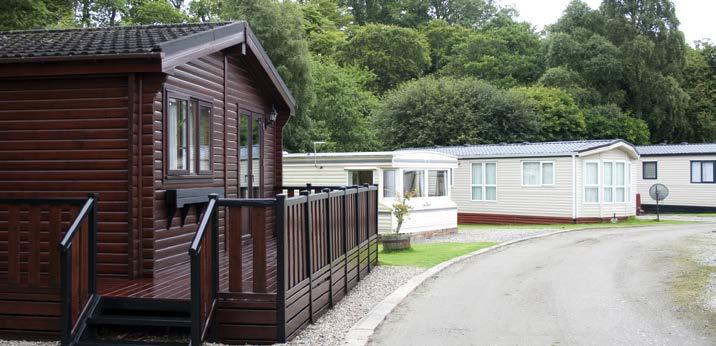
Do You Know MH Lingo?
By George Allen, CPM Emeritus, MHM-Master
My e a rl ie s t m e m o r y o f m o b i l e h o u s i n g occurred when I was 5 years of age, living in southern New Jersey.
On the way home from the shore one summer evening we stopped for gas. While there, a half dozen or so small house-like trailers pulled off into the woods across the street from the service station, and their owners started hacking down brush and small trees. I asked my father what was going on and he said, “Oh, they’re making a trailer camp for the night or
maybe next couple days.” That was 70 years ago, and much has changed, especially housing trade terminology. One of the earliest and most persistent trade terms, extending back 50 years, has been “D&R deliveries”. Ever since the early 1970s, our industry has been known, sad to say, for this style of drop and run for new trailers, mobile homes, and manufactured homes. And 1974-1976 is when HUD code and manufactured housing replaced mobile homes. And in the same timeframe, “syndicators” of mobile home park limited partnerships ushered in the initial consolidation of individual properties into portfolios. During the early 1980s, “newly wed and that nearly dead” became the truism describing folk buying mobile homes, then and now. In 1985, as the term manufactured housing became increasingly commonplace, the Manufactured Housing Association for Regulatory Reform (MHARR) was birthed by a former executive and members of the Manufactured Housing Institute (MHI).
The ALLEN REPORT debuted in 1989, today identifying 500+/- portfolio
REDEFINING VALUE FOR THE MH/RV ASSET CLASS BROKERAGE & ADVISORY SERVICES
CLIENT FOCUSED
DRIVEN
PROVEN RESULTS
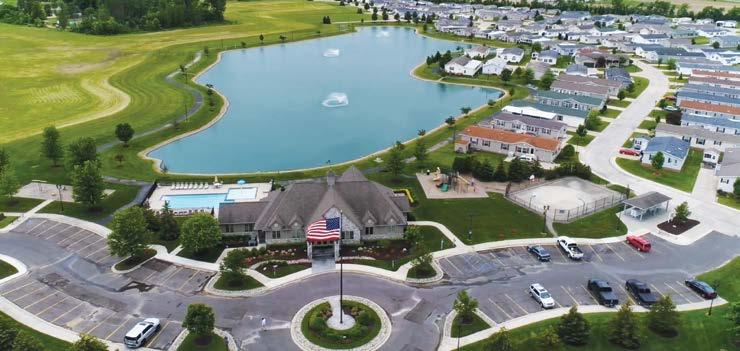
Christopher Nortley President | CEO (586) 884-8416 chris@mhreinc.com
Colleen Lannoo Broker Associate | Director of Data Research (586) 580-7322 colleen@mhreinc.com

Melissa Wade Senior Transaction Manger (586) 884-8415 melissa@mhreinc.com
Richard Zicker Senior Advisor (407) 640-7044 richard@mhreinc.com
Michel Mikkola Senior Advisor (407) 640-7046 michel@mhreinc.com
Melanie Ng Senior Analyst | Sales Associate melanie@mhreinc.com
PANELS THAT DEFEAT THE WEED EATER FOR ALL CLIMATE NEEDS



RUSTIQUE RIBB
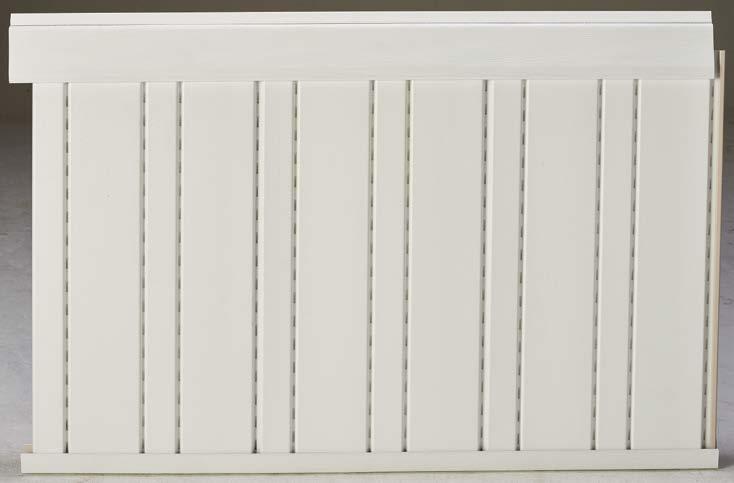


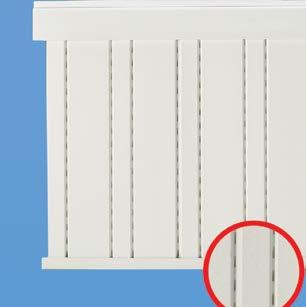
• Limited lifetime warranty to Weed Eater Damage • Engineered for Impact Durability and Wind Resistance • Patented Design - US10,378,202 • Available in Airflow and Solid • Recessed vents for a classic appearance
• Limited lifetime warranty to Weed Eater Damage • Panel backed with 2 inch Thermal Star EPS below grade foam by ATLASEPS for 9R+ insulation factor • Engineer certified projected energy savings • Complies with Hud wind loading for Zones I, II, III • Over fifteen years of use in the Manufactured Home Market RAPID WALL
